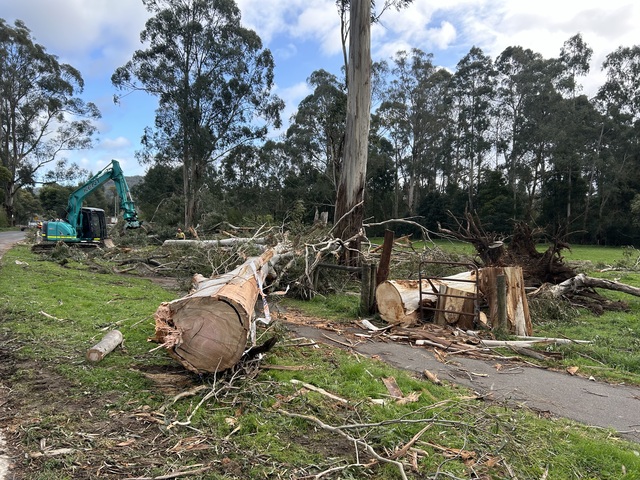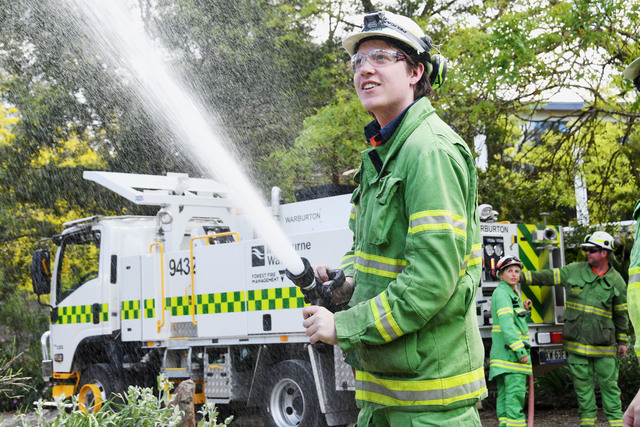An awful tempest mashed the air,
The clouds were gaunt and few;
A black, as of a spectre’s cloak,
Hid heaven and earth from view.
Emily Dickinson
Today as I write the sun is shining, there is no wind and the trees are still.
But this was not so two weeks ago.
Over the last few weeks we have experienced being buffeted by windstorms, lightning hail and rain, at times all at once.
Hopefully, we are moving into more settled weather but then unpredictable weather is part and parcel of spring, at least in our neck of the woods. Even so, recurring severe storm activity appears to be happening more often and with greater intensity.
For some this signals climate change due to human activity.as the primary cause of extreme weather events.For others this is just natural climate variability and not much we can do other than to adapt.
Though she doesn’t mention winds, Dorothea Makellar describes our country as ‘a wilful lavish land.’
A land of ‘droughts and flooding rains.’ There is however no mention of destructive winds.
The last few weeks have certainly been trying as ferocious winds with gusts equivalent to a category two tropical cyclone, accompanied by severe thunderstorms caused widespread damage across Victoria and elsewhere.
And it is the howling winds that have so unsettled people.
We can hear and feel and see the destructive effects of wind but we cannot see or describe what wind looks like. It is invisible but can dominate the natural world, turning a familiar landscape into something wild and chaotic.
The wind’s invisibility only heightens its menace and mystery.
Christina Rosetti captures this mysterious, invisible nature of wind:
Who has seen the wind?
Neither I nor you.
But when the leaves hang trembling,
The wind is passing through.
Who has seen the wind?
Neither you nor I.
But when the trees bow down their heads,
The wind is passing by.
Many would quickly point out that it did not merely ‘pass by’ but thundered by!
The lived experiences of those who have been impacted by these recent storms have been shared on our screens and phones.
We have seen property damage, with entire sheds blown over, smashed fences and flattened gardens, impassable roads with fallen trees, downed power lines and damaged switches leading to inevitable power outages.
All experienced against a background of howling winds.
The storms cut a swathe through huge areas of Victoria. The aftermath of strong winds was visible in places like the Mornington Peninsula with beach boxes at Mornington’s Mills Beach upended and severely damaged.
In the Dandenongs and surrounds we are left with the worrying thoughts that many of the shallow rooted gums clinging precariously to embankments on the sides of busy roads could be tragic accidents waiting to happen.
Hopefully, those responsible will do an inventory of the possible future danger they pose to passing traffic and act accordingly.
We all have within us a primal response to booming thunder and crackling lightning and howling winds so it’s not surprising that they often bring out powerful emotions, ranging from excitement to fear and not just in children but also in adults and the elderly, particularly those living alone.
Ask any school teacher and they will tell you that classrooms can become unruly on windy days as children tend to become more excitable, restless, or irritable.
But as Adrienne Rich advises, we have to learn to accept the vagaries of weather particularly when living in what she calls ’troubled regions.’
I draw the curtains as the sky goes black
And set a match to candles sheathed in glass
Against the keyhole draught, the insistent whine
Of weather through the unsealed aperture.
This is our sole defence against the season;
These are the things we have learned to do
Who live in troubled regions.
As a lover of summer fruits I have been concerned that the blossoms would have been blown off the trees before the fruit had time to set.
It seems that speaking to growers of cherries and other stone fruits they have escaped being damaged and we can look forward to the season starting in November.
Maybe we have to accept that we may be living with these extreme weather manifestations more and more often.
And if so how can we anticipate and protect ourselves?
How should we mitigate against these severe events causing disruption, destruction and injuries?
Meanwhile there are weeks of spring ahead of us to be enjoyed.
Entries for the Woorilla Poetry Prize close on 30 September.
Only two weeks remaining for entries to the Woorilla Poetry Prize 2024.
Please visit woorilla.org.au
Wind
Gwendolyn Bennett
The wind was a care-free soul
That broke the chains of earth,
And strode for a moment across the land
With the wild halloo of his mirth.
He little cared that he ripped up trees,
That houses fell at his hand,
That his step broke calm on the breast of seas,
That his feet stirred clouds of sand.
But when he had had his little joke,
Had shouted and laughed and sung,
When the trees were scarred, their branches broke,
And their foliage aching hung,
He crept to his cave with a stealthy tread,
With rain-filled eyes and low-bowed head.







